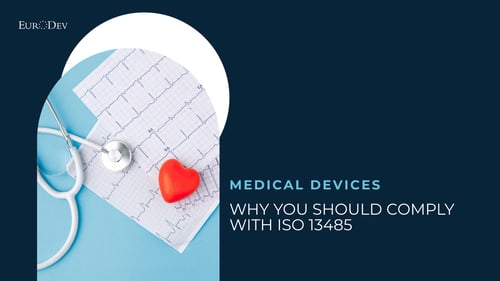New Medical Device Labels Laws in EU: Your Compliance Guide
As of 26 May 2022, all in-vitro diagnostic (IVD) equipment and devices must comply with the new Medical Device Regulation EU 2017/746. This regulation applies mainly to devices that are for self-testing, near-patient testing, and rapid tests to add specific symbols/labels on their products.
MDSW companies that intend to place their products on the EU market should be aware of the key changes of the MDR. Thus, this blog will outline new medical device labels in Europe, with a brief explanation of the meanings behind symbols.
Bonus read: UK Medical Device Regulation Changes: Key Considerations
![]()
Medical Device Label for Self-Testing
This label indicates that the medical device is a self-test in vitro diagnostic device. With this device, anyone can easily use it without requiring a doctor’s support. Examples of this self-testing equipment are ovulation tests, pregnancy tests, and other tests that can be purchased from a pharmacy or a drug store.
![]()
Not for Self-Testing Labeling
The "not for self-testing" symbol illustrates that a medical device is not for self-testing but requires a trained medical professional. It is advisable to add this label close to the "for the near-patient testing" symbol. Some examples of search devices are tests used to detect streptococcal antigens in the throat and tests used to determine allergies from a blood sample.
![]()
Medical Device Label for Near-Patient Testing
"The near-patient testing" label illustrates that a medical device can only be used in a near-patient setting by a health worker, professional, or trainee. These devices should not be used by patients themselves. Individuals who have acquired knowledge on how to use the specific device will be assigned to use the device on the patient.
The most common examples of near-patient devices are found in first aid kits, ambulances, emergency units, clinics, hospitals, and workplaces should have this symbol. Some of the devices that require this symbol are urine tests and rapid screening for drugs.
![]()
Not for Near-Patient Testing Labeling
This symbol is to be placed on devices that are to be used by only a trained medical professional or laboratory professional. These devices will be put on rapid tests that are intended for only laboratory environments. This might include handheld drug rapid tests, blood coagulation tests, and several others.
All medical devices that are subjected to the new IVDR would be required to put these labels on their products. All labels should be placed on the product and should be clearly legible and indelible. If all the labels cannot be put on the product, the IVD manufacturer will be required to place the labels/symbols on the packaging for each IVD product.

How Can EuroDev Help with Medical Device Labeling Standards?
Through the offering of a variety of business expansion services, EuroDev has played a pivotal role in the European expansion of over 500 North American companies since 1996.
Our expertise in the European medical device market can help you, too, to stay compliant with new EU medical device labeling standards. Your partnership with EuroDev can accelerate submissions and approvals for manufacturers who want to expand into these markets. Check out our Sales Outsourcing services to learn more about how we can assist you.
For further market information, contact us at e-nijland@eurodev.com and schedule a meeting.
Category
Related articles
-

MEDICA: Expanding Horizons to Europe
7 November 2023Explore the opportunities for expanding your healthcare business into Europe with the Medica trade...
Read more -

Unleashing the Potential of Digital Health Market in Europe
26 June 2023Digital Health Market in Europe is growing each year, which opens more opportunities for foreign...
Read more -

Quality Management System (QMS) and ISO 13485
15 May 2023This blog is about quality management systems (ISO 13485), one of the most important requirements...
Read more

